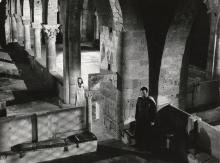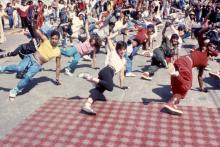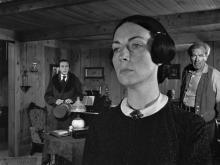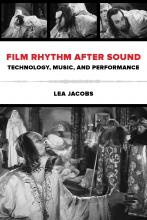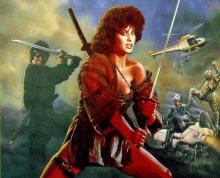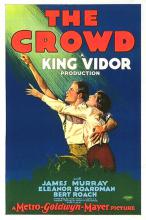This essay discusses Orson Welles' Othello and was written by UW Alum and former Cinematheque staff member Evan Davis. Othello screens in a new restoration in the Cinematheque's regular venue, 4070 Vilas Hall, on Saturday, February 7 at 7 p.m.
By Evan Davis
By virtue of its production and for its aesthetic qualities (and trust me, the two are interwoven as tightly as thread), Orson Welles's Othello represents a rebirth in his filmmaking career. It was the first film he made in Europe; it was the first film he financed independently, mostly from his own pocket; and it was the first film to abandon his trademark deep-focus, mobile long-take style for one more reliant on editing to provide its stylistic ballast. The fact remains, however, that Othello is one of Welles's greatest triumphs--and one of the best Shakespeare adaptations ever committed to screen. It would serve as the template for Welles's working methods for the rest of his life.
Welles had escaped both the artistic and political turmoil of postwar Hollywood in 1947, just after finishing his version of Macbeth for Republic Pictures. A year later, an Italian producer asked him to make Othello. It seemed only fitting, as Welles was a great admirer of the play and had played the Moor at various points throughout his life. Financing was put together, and a plan was in place to shoot multiple scenes in single takes at a studio near Nice, France. But of course, as it would so often for the rest of Welles's career, the producer's finances dried up at the last minute. Welles was not deterred, however. Instead of building sets in a studio and shooting long takes, he decided to continue working, shooting on location in such far-flung places as Italy, Morocco and Tunisia. A simple enough fix, right? Wrong.
Welles was financing the movie from his own bankroll. That bankroll would quickly run out, and the cast and crew would have to shut down production. Welles would then take acting jobs (The Third Man, Prince of Foxes and The Black Rose among them) to raise more money to keep going. The obvious problem was that his actors and crew members wouldn't always be available at the same time, as months would pass between production sessions. Welles was then forced to use editing to maintain continuity within a scene. So rigorous were his scheduling and budgetary limitations that locations often moved a thousand miles from shot to shot, even though Iago (Micheal MacLiammoir) may only pass through a door in the scene. (Both MacLiammoir and Welles told a famous story of the scene in which Roderigo is murdered: Welles had ordered the costumes for the scene, but they never arrived. He only had so much time to film it, so on the fly, at the suggestion of his production designer, Alexandre Trauner, he converted a fish market into a Turkish bathhouse, shot the actors topless, and finished the scene.) All in all, the film took three years to film and edit.
How did Welles prevent Othello from becoming a jumbled mess? He was very conscious to obey the basic rules of classical continuity editing. Eyelines always match up from shot to reverse-shot; matches on action are smooth and graceful; lighting cues are consistent and properly sourced within the frame; even the locations themselves are visually complementary. Welles shot for three years on multiple continents with multiple cinematographers, with no script supervisor, and yet the film is seamless. To say that this is a phenomenal achievement is understating the case.
Indeed, it would be difficult to imagine the film without its extraordinary location work. Welles put his camera in every possible place within castles, on turrets, behind doors, above stone columns. His vision of Cyprus is an expressionist nightmare, with chiaroscuro pools of light piercing a labyrinth of secrets and betrayals. Welles's images are graphically overloaded with patterns and barriers, separating characters, always peering in with nefarious intent. The final, high-angle shot of Othello's death is cut with such perfectly brilliant force that Welles may never have made so starkly lonely an image for the rest of his career. Chimes at Midnight is Welles's heart, but Othello is the darkness inside his soul.
The version screening at the Cinematheque demands some commentary. Welles completed Othello in 1952, and then re-edited it slightly for its American release in 1955. The inferior dubbing equipment found in Europe at the time made the dialogue synchronization a little precarious. In 1992, Welles's youngest daughter and Othello's rights holder, Beatrice, commissioned a restoration to resync the dialogue. Beatrice and restoration producer Michael Dawson went further, re-recording the score in stereo based on a flawed source, and altering many of the film's sound effects. Some mistakes were corrected upon the restoration's release to home video, but the fact remains that the soundtrack is not Welles's. Carlotta Films recently digitally restored the film, and there is no doubt that this edition looks astonishingly beautiful; however, the same soundtrack from the 1992 restoration remains.

